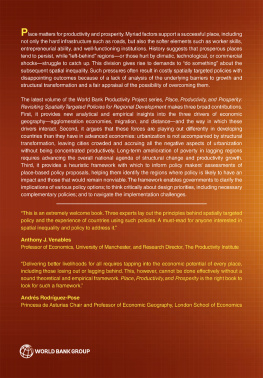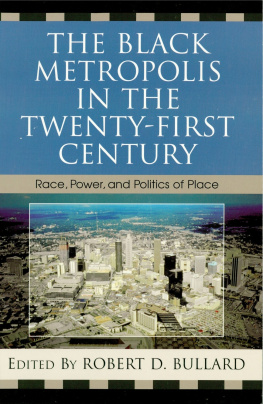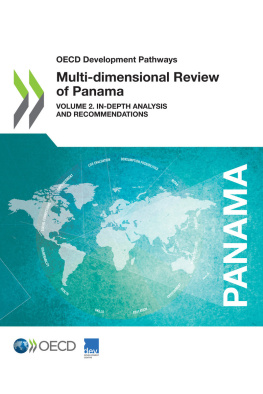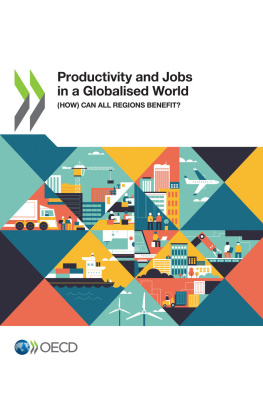Place, Productivity, and Prosperity
Revisiting Spatially Targeted Policies for Regional Development
Arti Grover, Somik V. Lall, and William F. Maloney

2022 International Bank for Reconstruction and Development / The World Bank
1818 H Street NW, Washington, DC 20433
Telephone: 202-473-1000; Internet: www.worldbank.org
Some rights reserved
1 2 3 4 25 24 23 22
This work is a product of the staff of The World Bank with external contributions. The findings, interpretations, and conclusions expressed in this work do not necessarily reflect the views of The World Bank, its Board of Executive Directors, or the governments they represent. The World Bank does not guarantee the accuracy, completeness, or currency of the data included in this work and does not assume responsibility for any errors, omissions, or discrepancies in the information, or liability with respect to the use of or failure to use the information, methods, processes, or conclusions set forth. The boundaries, colors, denominations, and other information shown on any map in this work do not imply any judgment on the part of The World Bank concerning the legal status of any territory or the endorsement or acceptance of such boundaries.
Nothing herein shall constitute or be construed or considered to be a limitation upon or waiver of the privileges and immunities of The World Bank, all of which are specifically reserved.
Rights and Permissions

This work is available under the Creative Commons Attribution 3.0 IGO license (CC BY 3.0 IGO) http://creativecommons.org/licenses/by/3.0/igo. Under the Creative Commons Attribution license, you are free to copy, distribute, transmit, and adapt this work, including for commercial purposes, under the following conditions:
AttributionPlease cite the work as follows: Grover, Arti, Somik V. Lall, and William F. Maloney. 2022. Place, Productivity, and Prosperity: Revisiting Spatially Targeted Policies for Regional Development. Washington, DC: World Bank. doi:10.1596/978-1-4648-1670-3. License: Creative Commons Attribution CC BY 3.0 IGO
TranslationsIf you create a translation of this work, please add the following disclaimer along with the attribution: This translation was not created by The World Bank and should not be considered an official World Bank translation. The World Bank shall not be liable for any content or error in this translation.
AdaptationsIf you create an adaptation of this work, please add the following disclaimer along with the attribution: This is an adaptation of an original work by The World Bank. Views and opinions expressed in the adaptation are the sole responsibility of the author or authors of the adaptation and are not endorsed by The World Bank.
Third-party contentThe World Bank does not necessarily own each component of the content contained within the work. The World Bank therefore does not warrant that the use of any third-party-owned individual component or part contained in the work will not infringe on the rights of those third parties. The risk of claims resulting from such infringement rests solely with you. If you wish to re-use a component of the work, it is your responsibility to determine whether permission is needed for that re-use and to obtain permission from the copyright owner. Examples of components can include, but are not limited to, tables, figures, or images.
All queries on rights and licenses should be addressed to World Bank Publications, The World Bank Group, 1818 H Street NW, Washington, DC 20433, USA; e-mail: .
ISBN (paper): 978-1-4648-1670-3
ISBN (electronic): 978-1-4648-1794-6
DOI: 10.1596/978-1-4648-1670-3
Cover image: Remedios Varo, Spiral Transit (1962). 2021 Remedios Varo, Artists Rights Society (ARS), New York / VEGAP, Madrid. Used with the permission of Artists Rights Society (ARS), New York / VEGAP, Madrid. Further permission required for reuse.
Cover design: Bill Pragluski, Critical Stages, LLC.
Library of Congress Control Number: 2021949870
Contents
Foreword |
Preface |
Acknowledgments |
About the Authors |
Abbreviations |
Executive Summary |
| Place, Productivity, and Prosperity: An Introduction |
Introduction |
The Attraction of Place-Based Policies |
Three Forces Shaping the Economic Landscape |
Lagging Places, Left-Behind Peopleand Perhaps, Missed Opportunities |
Notes |
References |
| Agglomeration Economies, Productivity, and the Persistence of Place |
Introduction |
A Virtuous Cycle of Economic Concentration, Higher Productivity, and More Prosperity |
The Developing Country Urban Productivity Puzzle |
Changing Drivers of Spatial Activity: The Future Isnt What It Used to Be |
Unpacking the Association of Density with Productivity |
Measuring the Benefits of Spatial Concentration |
Measuring the Full Costs of Agglomeration: Accounting for the Extra Expense of Working in Developing Country Cities |
Conclusion |
Annex 2A. Estimating Productivity, Marginal Cost, and Markups |
Notes |
References |
| The Promise of Labor Mobility |
Introduction |
The Evidence on Internal Migration |
The Barriers to Internal Migration |
Conclusion |
Notes |
References |
| Globalization and Digital Development: Bridging Distances within Countries |
Introduction |
Globalization and Regional Growth within Countries |
How Trade Costs, Infrastructure, and Institutions Affect Growth within Countries |
The Role of Digital Connectivity in Narrowing Disparities between Regions |
Conclusion |
Notes |
References |
| Lagging Places: Missed Opportunities, Left-Behind People |
Introduction |
Two Tales of Cities: Not Every Place Has Potential for Growth |
Why Is a Region Not Thriving Already? |
Three Arguments Often Used to Support Place-Based Policies for Nonviable Regions |
Complementarities, Silver Bullets, and Big Pushes |
Conclusion |
Notes |
References |
| A Framework for Appraising Place-Based Policies |
Introduction |
Principles for Appraising Place-Based Policies |
Dealing with Challenges in Fully Appraising Policies: Using the Framework as a Heuristic Tool |
Lessons from World Bank Evaluations of Projects to Enhance Agglomeration |
|












